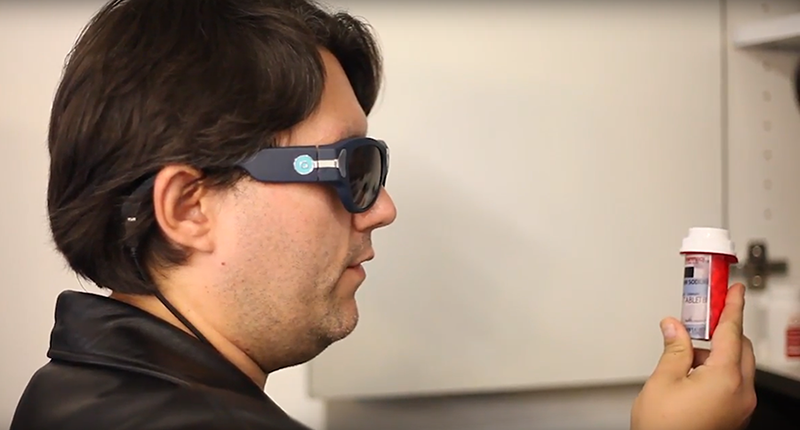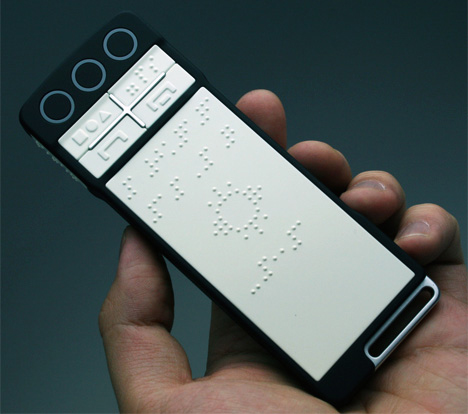Enhancing Lives With Advanced Assistive Instruments for the Blind
The assimilation of sophisticated assistive gadgets for the blind is changing exactly how individuals experience their environments and communicate with their neighborhoods. Innovations such as increased truth smart glasses and innovative electronic travel aids not just assist in navigation yet additionally improve general top quality of life. These innovations promote a sense of freedom and self-efficacy amongst individuals, enabling them to undertake everyday jobs with newly found confidence. Nonetheless, the implications of these improvements extend past simple functionality; they test social understandings of special needs and independence. What does this advancement indicate for the future of assistive technology and its function in encouraging people?
Summary of Assistive Instruments
Assistive devices for the blind incorporate a diverse variety of devices and technologies created to enhance independence and enhance the top quality of life for individuals with aesthetic disabilities. These tools accommodate numerous needs, from navigation and wheelchair to communication and everyday job monitoring.
Among the key classifications of assistive tools consists of wheelchair aids, such as white walking sticks and guide pets, which assist customers navigate their surroundings securely. Electronic traveling help, equipped with sensors and audio comments, additionally play a substantial duty in movement enhancement.
Additionally, devices that aid with daily living activities, such as adaptive kitchen devices, Braille labels, and talking watches, encourage individuals to carry out jobs independently. Communication aids, including screen visitors and Braille displays, facilitate accessibility to details and allow people to engage effectively with the electronic globe.
Moreover, low-tech solutions like magnifying glasses and large-print products remain crucial for numerous users. Collectively, these assistive tools offer not just as useful tools yet likewise as vital enablers of autonomy, fostering greater participation in a globe that typically prioritizes sighted experiences. Their assimilation into every day life is important for promoting inclusivity and boosting total wellness for those with visual impairments.
Cutting-edge Technologies being used
Advancement in innovation has significantly changed the landscape of devices readily available for people with aesthetic disabilities. Among one of the most noteworthy developments are clever glasses integrated with increased fact, which offer real-time navigation support and object acknowledgment. These tools take advantage of progressed cameras and artificial intelligence to provide acoustic cues, enhancing the user's spatial understanding and autonomy.
In addition, mobile applications have emerged as effective resources, making it possible for customers to recognize currency, reviewed text out loud, and navigate unfamiliar environments with verbal directions. Tools such as Braille display screens and refreshable Braille tools remain to advance, offering seamless connection with computer systems and smart devices, thereby boosting interaction and accessibility to details.
Wearable modern technology, consisting of smartwatches furnished with voice-activated attributes, better equips individuals by facilitating fast access to notices and alerts without calling for aesthetic involvement. Responsive maps and 3D printing are also obtaining traction, providing tangible representations of rooms that aid in positioning and movement training.
Jointly, these ingenious modern technologies not only boost the everyday lives of aesthetically damaged people yet additionally foster greater freedom, inclusivity, and interaction with the broader neighborhood, therefore reshaping perceptions of see here ease of access. (Braille displays and notetakers)
Personal Stories of Empowerment
Empowerment usually arises from individual experiences that highlight the transformative effect of technology on people with visual problems. Take, for example, the tale of Sarah, a young musician that reclaimed her enthusiasm for painting through the use of a wise cane furnished with obstacle detection. This device not only facilitated her wheelchair but instilled a newly found self-confidence, enabling her to navigate public areas independently and pursue her innovative ventures.

These stories highlight the profound impacts that progressed assistive tools can have on life. By making it possible for people to get rid of obstacles, modern technology cultivates a feeling of autonomy and self-regard. Such empowerment stories serve as a testimony to the potential of technology, showing exactly how the right devices can considerably improve lifestyle and open doors to new possibilities for those with aesthetic problems.
Benefits of Advanced Solutions
The combination of cutting-edge modern technology into assistive devices considerably transforms day-to-day experiences for those influenced by vision loss. Assistive technology for the blind. Gadgets such as wise canes furnished with sensing units, navigating apps, and wearable modern technology are developed to provide real-time feedback, boosting spatial awareness and minimizing the risks linked with wheelchair.
In addition, advanced assistive innovations foster social incorporation by assisting in communication and interaction. Voice-activated tools and applications allow individuals to accessibility details and involve with their surroundings independently, damaging barriers that wikipedia reference formerly prevented their engagement in academic, expert, and social settings.
In enhancement, the modification and versatility of these options accommodate the diverse demands of individuals, thereby boosting their total high quality of life. Enhanced functionality, such as object recognition and text-to-speech abilities, encourages individuals with aesthetic disabilities to carry out jobs that they might have when discovered challenging. Ultimately, progressed assistive modern technologies not only boost freedom and safety however likewise advertise self-respect and self-respect, allowing users to lead meeting lives.
Future Trends in Assistive Technology
As modern technology continues to evolve, the landscape of assistive tools for the blind is positioned for impressive developments that will further boost ease of access and self-reliance. Emerging trends in assistive modern technology show a change toward raised assimilation of artificial intelligence (AI) and machine learning, allowing tools to adjust to specific user requires in real-time. These innovations are expected to facilitate even more instinctive navigating systems that can determine obstacles and supply audio comments, considerably boosting exterior mobility.
Additionally, the growth of wearable technology, such as clever glasses outfitted with increased truth, will allow users to get contextual info concerning their environments, thereby enriching their spatial understanding. Moreover, improvements in haptic innovation guarantee to produce tactile comments devices, allowing customers to perceive details through touch, improving discovering and interaction with their atmosphere.
Telecommunication developments are also leading the way for remote support remedies, where skilled specialists can give guidance via video phone calls, ensuring support is conveniently accessible. As these patterns unravel, the future of assistive devices for the blind will undoubtedly cultivate greater freedom, empowering people to navigate their world with confidence and convenience.

Verdict
The integration of advanced assistive gadgets for the blind represents a significant innovation in promoting freedom and enhancing lifestyle. By utilizing cutting-edge modern technologies, these gadgets encourage individuals to browse their settings with greater self-confidence and autonomy. As the field proceeds to advance, continuous r & d will likely yield even more sophisticated options, further transforming the lived experiences of people with aesthetic disabilities and promoting a higher feeling of inclusion within culture.
The integration of advanced assistive devices for the blind is transforming exactly how people experience their environments and communicate with their neighborhoods. The assimilation go now of advanced innovation right into assistive tools significantly changes daily experiences for those affected by vision loss.As technology continues to evolve, the landscape of assistive gadgets for the blind is poised for exceptional advancements that will certainly further enhance ease of access and independence. Arising fads in assistive technology suggest a shift towards raised assimilation of fabricated intelligence (AI) and equipment understanding, enabling tools to adapt to individual user requires in real-time.The integration of sophisticated assistive tools for the blind represents a considerable innovation in cultivating freedom and enhancing top quality of life.
Comments on “Screen Readers for the Blind: Accessing Information Without Barriers”